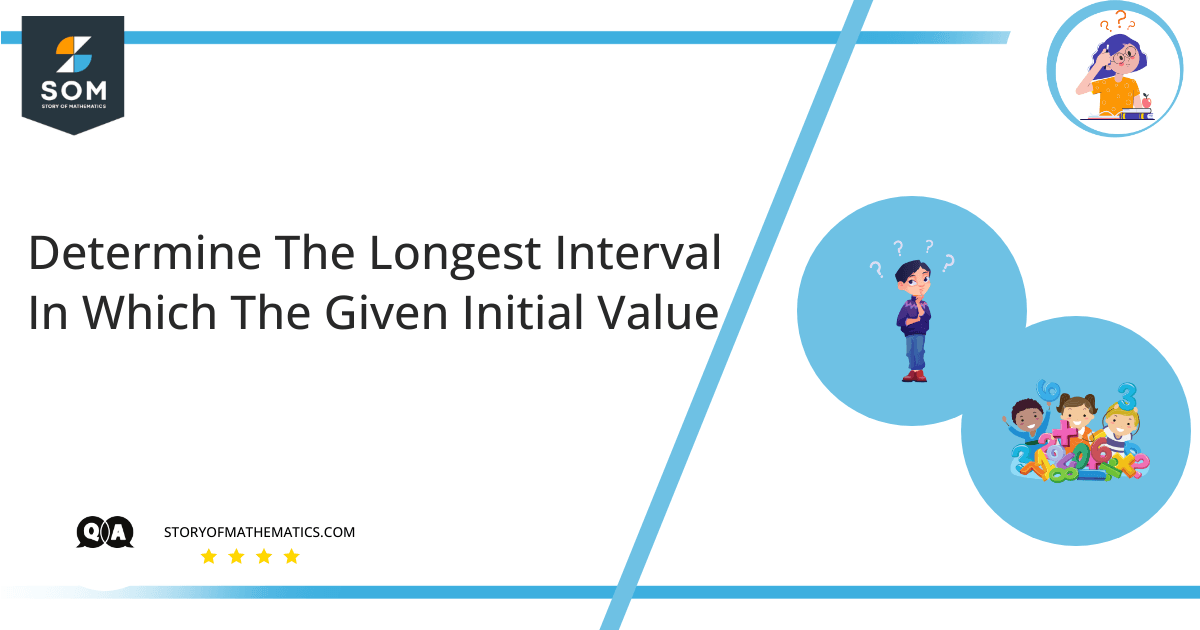
( x + 3 ) y” + x y’ + ( ln|x| ) y = 0, y(1) = 0, y'(1) = 1
The aim of this question is to qualitatively find the possible interval of the differential equation’s solution.
For this we need to convert any given differential equation to the following standard form:
\[ y^{”} \ + \ p(x) y’ \ + \ q(x) y \ = \ g(x) \]
Then we have to find the domain of the functions $ p(x), \ q(x), \ and \ g(x) $. The intersection of the domains of these functions represents the longest interval of all the possible solutions to the differential equation.
Expert Answer
Given the differential equation:
\[ ( x + 3 ) y^{”} + x y’ + ( ln|x| ) y = 0 \]
Rearranging:
\[ y^{”} + \dfrac{ x }{ x + 3 } y’ + \dfrac{ ln| x | }{ x + 3 } y = 0 \]
Let:
\[ p(x) = \dfrac{ x }{ x + 3 } \]
\[ q(x) = \dfrac{ ln|x| }{ x + 3 } \]
\[ g(x) = 0 \]
Then, the above equation takes the form of the standard equation:
\[ y^{”} + p(x) y’ + q(x) y = g(x) \]
Incorporating $ y(1) = 0 $ and $ y'(1) = 1$, It can be noticed that:
\[ p(x) = \dfrac{ x }{ x + 3 } \text{ is defined on the intervals } (-\infty , \ -3) \text{ and } (-3, \ \infty) \]
\[ q(x) = \dfrac{ ln|x| }{ x + 3 } \text{ is defined on the intervals } (-\infty , \ -3), \ (-3, \ 0) \text{ and } (0, \ \infty) \]
\[ g(x) = 0 \text{ is defined on the intervals } (-\infty, \ \infty) \]
If we check the intersection of all the above intervals, it can be concluded that the longest interval of the solution is $ (0, \ \infty) $.
Numerical Result
$ (0, \ \infty) $ is the longest interval in which the given initial value problem is certain to have a unique twice differentiable solution.
Example
Determine the longest interval in which the given initial value problem is certain to have a unique twice differentiable solution.
\[ \boldsymbol{ y^{”} \ + \ x y’ \ + \ ( ln|x| ) y \ = \ 0, \ y(1) \ = \ 0, \ y'(1) \ = \ 1 } \]
Comparing with the standard equation:
\[ y^{”} + p(x) y’ + q(x) y = g(x) \]
We have:
\[ p(x) = x \Rightarrow \text{ is defined on the interval } (0, \ \infty) \]
\[ q(x) = ln|x| \Rightarrow \text{ is defined on the interval } (-\infty, \ \infty) \]
\[ g(x) = 0 \]
If we check the intersection of all the above intervals, it can be concluded that the longest interval of the solution is $ (0, \ \infty) $.
